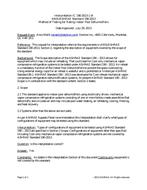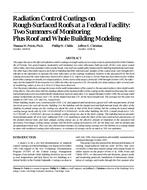Mechanical ventilation of residences, with heat recovery in air-to-air heat exchangers, is an increasingly common practice. When this technique of ventilation is used in cold climates, however, freezing can occur in the air-to-air heat exchanger and substantially reduce its performance. A laboratory investigation was conducted to determine the indoor and outdoor environmental conditions that lead to freezing. In a cross-flow, counterflow, and enthalpy-type cross-flow heat exchanger, respectively, freezing was observed when the inlet temperature of the cold airstream was below –7 to –3°C, approximately –6°C, and –8 to –12°C, for a typical range of indoor humidities. These results are in fair agreement with the theoretical predictions presented in this paper and with data from two field studies conducted with similar heat exchangers. Data from a previous laboratory study of a counterflow heat exchanger and tabulated data supplied by ASHRAE, however, indicate that freezing is initiated at significantly lower cold airstream temperatures, particularly when the warm airstream is humid.
Citation: Symposium, ASHRAE Transactions, 1985, vol. 91, pt. 1B, Chicago
Product Details
- Published:
- 1985
- Number of Pages:
- 14
- File Size:
- 1 file , 1.5 MB
- Product Code(s):
- D-CH-85-03-1


